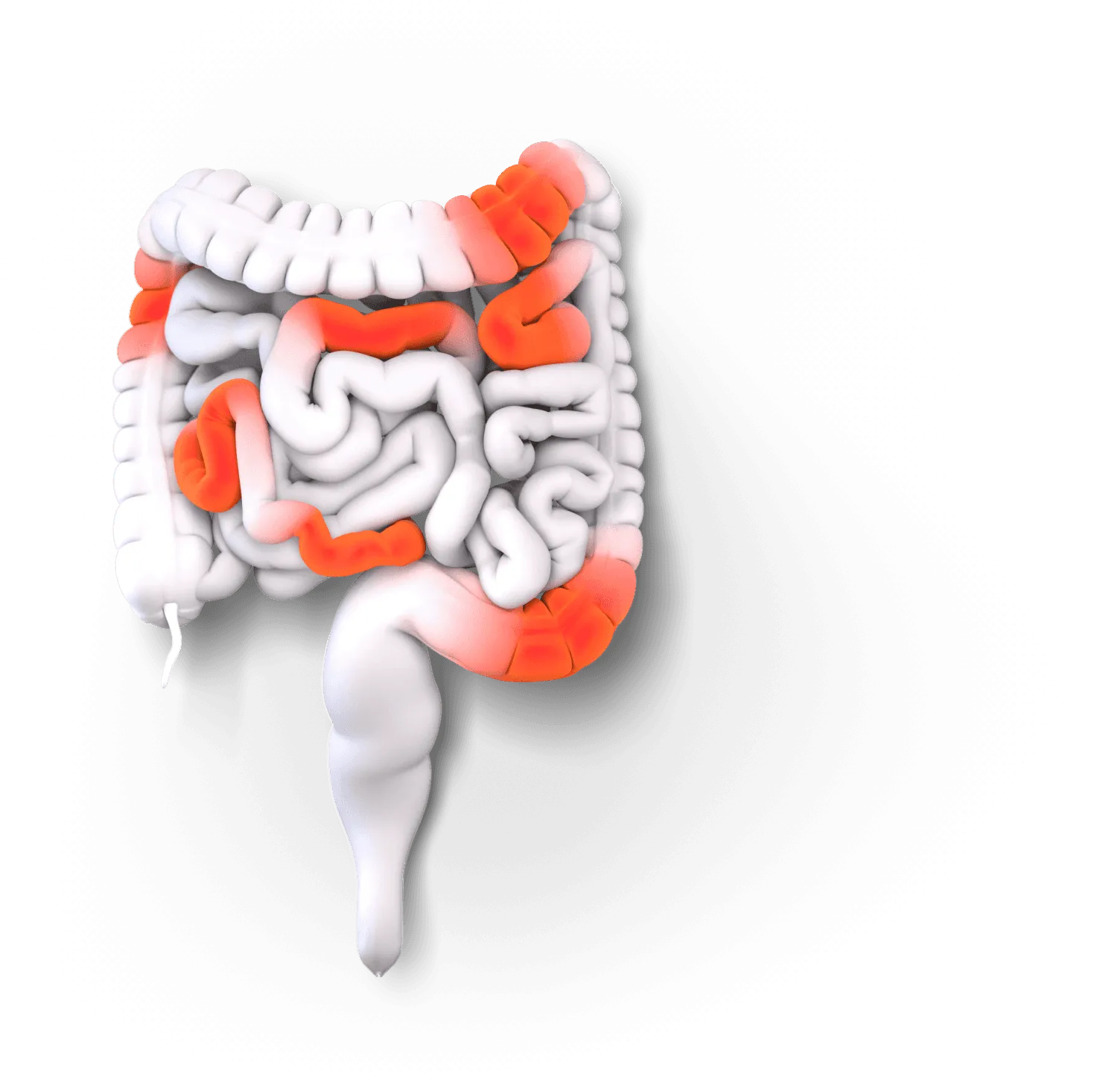

Crohn’s disease
Crohn’s is one of the main types of inflammatory bowel disease (IBD). It’s a lifelong condition and it’s usually progressive. But, with help from their care team, many people with Crohn’s can manage their symptoms and have active lives.
Ana Living with Crohn’s

Crohn’s is an autoimmune disease
With Crohn’s, your immune system attacks the lining of your digestive tract by mistake. It can affect any part of your digestive tract, from the mouth to the anus. It commonly impacts the end of the small intestine and beginning of the large intestine. Inflammation can affect all layers of the intestinal wall and can skip between areas of the gut. That means there may be patches of healthy tissue in between diseased areas. It’s unclear why your immune system attacks healthy cells, but your genetics and environment likely play a role in triggering this immune response.
What are some of the symptoms of Crohn’s disease?
Some Crohn’s symptoms overlap with other types of IBD, but there are some that are specific. These include diarrhea that typically isn’t bloody, malnutrition, and mouth sores. It’s important to talk to your healthcare provider about any symptoms that are bothering you.
Diarrhea or changes in bowel movements
Malnutrition
Mouth sores
Abdominal pain (or stomach pain or cramping)
Fatigue
Nausea
Weight loss

Causes and risk factors
Like all types of IBD, the exact cause of Crohn’s isn’t clear.
A person may develop Crohn’s due to the interaction between the genes they inherit from their parents and environmental factors (such as where they live and their lifestyle). Together, these factors could trigger an immune response.
Severity and progression
Because Crohn’s typically gets worse over time in many patients, you and your healthcare team will probably keep a close eye on it. This is true even if you’re currently not having symptoms. Monitoring may include specific blood and stool tests and/or procedures such as a colonoscopy. These tests and procedures help determine and monitor the severity and progression of your disease. In combination with other factors, they can also help assess if your treatment is working.
Learn about monitoring Crohn’s
How Crohn’s can affect your body
Crohn’s can affect any part of your digestive tract, from the mouth to the anus.
Maybe you’ve heard someone talk about extraintestinal manifestations, or EIMs. Simply put, these are ways Crohn’s can affect your body beyond the gut.
Here are a few of the most commonly affected areas:
Mouth
Sores can develop
Abdomen
Nausea and stomach pain or cramping
Intestines
Diarrhea or changes in bowel movements, malnutrition, and unexplained weight loss
Eyes
Inflammation of the eyes
Liver and gallbladder
Gallstones, infection in or scarring of the bile ducts
Kidneys
Kidney stones, urinary tract infections, and swollen kidneys
Joints
Arthritis in various joints
Skin
Painful, red, or pus-filled bumps
Whole body
Feeling more tired than usual
How Crohn’s disease is:

Diagnosed
Diagnosed

Managed
Managed

Treated
Treated

Marilyn Living with Crohn’s
After living with Crohn’s for so many years, I found my voice.See Marilyn’s story
Featured
resource

Crohn’s brochure
Understand what Crohn’s disease is, how it’s different from ulcerative colitis, and how it’s treated and monitored.
Get the latest sent straight to your inbox.
Sign up
